Hwangmaesan County Park (황매산군립공원)
18.5 Km 9887 2021-08-18
4, Hwangmaesangongwon-gil, Hapcheon-gun, Gyeongsangnam-do
+82-55-930-4752
Located at the border between Gahoe-myeon and Daebyeong-myeon of Hapcheon, Hwangmaesan Mountain has long been considered a guardian mountain of Hapcheon, but was rarely ever featured in hiking or tourist publications. Thanks to this, the mountain's natural environment has been kept in pristine condition. In 1983, the mountain was designated as a county park and now, along with Gayasan Mountain, it is regarded as one of the major mountains in Hapcheon. Hwangmaesan Mountain is one of the last mountain peaks of the Taebaek Mountain Range, and reaches an altitude of 1,113 meters. Pine trees and royal azalea decorate the rocky mountain. From the summit, hikers can see Hapcheonho Lake and Jirisan, Deogyusan, and Gayasan Mountains.
Sancheong Hwangmaesan Mountain (황매산(산청))
19.2 Km 40899 2021-04-13
Hwangmaesan-ro 1202beon-gil, Sancheong-gun, Gyeongsangnam-do
+82-55-970-6901
One of the last mountains of the Taebaek Mountain Range, Hwangmaesan Mountain is located in Sancheong, Gyeongsangnam-do. The mountain features fantastic rock formations and a beautiful vista from the summit that resembles arpricot blossoms. It is said that anyone who prays from the summit will have their wish come true, drawing in plenty of earnest hikers. In May, a large field near the summit is covered in vibrant pink royal azaleas. Attractions on the mountain include Bakjwigol Valley, Norubawi, Heundeulbawi, Janggunbawi, Chotdaebawi, Geobukbawi and Sinseonbawi Rocks among others.
Daegaya History Theme Park (대가야 역사테마관광지)
19.6 Km 29033 2023-03-07
1216, Daegaya-ro, Goryeong-gun, Gyeongsangbuk-do
+82-54-950-7005
Daegaya History Theme Park is located in what was the center of the Daegaya Kingdom. The park offers various areas to learn about not only the history of the area but also the current culture and the future of Goryeong. In particular, visitors can enjoy various items produced during the Daegaya era such as pottery, ironworks, and gayageum (traditional Korean string instrument), as well as visit the park's 4D theater and walk along the forest exploration trail.
Santokki Park (산토끼 노래동산)
19.7 Km 0 2023-06-27
623 , Ibang-ro, Changnyeong-gun, Gyeongsangnam-do
+82-0507-1352-1401
Santokki Park is a recreational space located behind Ibang Elementary School in Changnyeong-gun. The park was inspired by the children's song "Santokki," meaning mountain rabbit, composed and written by Lee Il-lae who was a staff at Ibang Elementary School. The park comprises a variety of things to do and see related to rabbits, including a rabbit village, rabbit cave, and rabbit feeding experience. There are also spaces dedicated to Lee Il-lae, his work, and small animals. The park is kids-friendly with recreational places where children can freely run around as well as other amenities that help visitors rest and relax.
Cancelled: Daegaya Festival (대가야체험축제)
19.8 Km 24551 2022-05-09
1216, Daegaya-ro, Goryeong-gun, Gyeongsangbuk-do
• 1330 Travel Hotline: +82-2-1330 (Korean, English, Japanese, Chinese) • For more info: +82-54-950-6424
Daegaya (AD 42-562) was a nation that inhabited the Korean Peninsula around the 4th Century. The nation was a sophisticated nation that even at this early age possessed extremely high standards of culture. They created the Gayageum (a twelve-stringed traditional Korean harp). Through the relics found in the area, the nation was thought to be a powerful force in the area (now Gyeongsangnam-do). This festival offers various interactive programs to experience the nation with relic exhibition, wooden boat-making and others. Also, tourists can experience the farming culture like harvesting strawberries from the nearby rural village.
Goryeong Daegaya Festival (고령대가야축제)
19.8 Km 0 2024-06-14
1216 Daegaya-ro, Daegaya-eup, Goryeong-gun, Gyeongsangbuk-do
+82-54-950-6424
The Goryeong Daegaya Festival celebrates the history of Daegaya, a nation that inhabited the Korean Peninsula around the 4th Century. The festival features many performances and experiences, allowing visitors to imagine life in the past.
Daegaya Museum (대가야 박물관)
19.8 Km 18996 2022-09-13
1203, Daegaya-ro, Goryeong-gun, Gyeongsangbuk-do
+82-54-950-7103
Daegaya Museum exhibits the history, culture, and customs of the Daegaya Kingdom. The museum consists of the Daegaya Royal Tomb Pavilion, the Daegaya History Pavilion, and Ureuk Museum.
The Royal Tomb Pavilion is a 37 meter-wide dome that houses relics of the Jisan-dong Ancient Tombs, a Historic Site. It is essentially the restoration of the Jisandong Tumulus, the first large-scale sunjang (burial of the living with the dead).
The History Pavilion houses a collection of relics from the Daegaya Kingdom, while holding special exhibitions and educational activities periodically. The outdoor exhibition center displays items that showcase the ancient lifestyle.
Ureuk Museum is a dedicated to Ureuk, a Daegaya musician who invented the gayageum, a traditional Korean twelve-stringed instrument.
Goryeong Daegaya Historic Site (고령 대가야유적지)
19.9 Km 16619 2020-06-18
1203, Daegaya-ro, Goryeong-gun, Gyeongsangbuk-do
+82-54-950-7103
The town of Goryeong is four hours outside of Seoul, and features many relic sites of Daegaya around the whole district of Goryeong-gun. Around the first century, Daegaya was formed in the Nakdonggang River’s downstream area in the lower Korean peninsula, flourished independently for 520 years (AD 42~562), and declined after the 6th century. After its decline, part of it was annexed by Silla (57 BC ~ AD 935), and the rest annexed by Baekjae (18 BC~AD 60), and became a forgotten tribal kingdom.
On King Jinheung’s (reign 540~576) 23rd year of reign it became the district of Daegaya, and the name was changed to the district of Goryeong on King Gyeongdeok’s (reign 742~765) 16th year of reign.
This is the place where you can view the country’s first Sunjangmyo (tomb where many dead people were buried together), called Jisandong Gobungun, Daegaya Royal Tomb Exhibit Hall, and Treasure No. 605, the pre-eminent relics site of the Prehistoric Period called Yangjeondong Amgakhwa, and other various cultural assets.
There is a large, ancient tomb with a diameter of 20m, built on the ridgeline of the mountain, and as you go down the mountain, there are 159 other tombs of smaller scale. The largest tomb in the south side is called the Geumrim Royal Tomb, and the other large tombs near it are presumed to be tombs of royalty or aristocrats.
At the Daegaya Royal Tomb Exhibit Hall, site of the restored No. 44 tomb, you can see the ancient custom of burying the living with the dead (Royalty buried with their retainers). The dome-style exhibit hall displays Sunjangseokgwak, ironware, pottery and other various excavated relics.
Jisandong Ancient Tombs (고령 지산동 고분군)
20.0 Km 11943 2020-02-10
San 23-1, Jisan-ri, Goryeong-eup, Goryeong-gun, Gyeongsangbuk-do
+82-54-950-6363
Goryeong was the old capital of Daegaya (42-562 AD), a city-state of the Gaya confederacy that once spanned the region now occupied by Gyeongsangnam-do Province to the south of the Korean peninsula. The city of Goryeong played such a central role in the development of the confederacy that many artifacts and historic sites of the Daegaya period can still be found there today.
Some of the most prominent landmarks are the 200 gobuns (ancient tombs) that lie along the southeastern slope of Jusan Mountain in Goryeong. In ancient times, the higher and larger a tomb, the higher the social status of the person buried inside. Given this tradition and historical evidence, the largest tomb in the south has been identified as Geumnim Wangneung (Royal Tomb of King Geumnim); the other large tombs are also presumed to be those of the kings of Daegaya. The large royal tombs (over 20m in diameter) dominate the mountain ridge (the highest point) while mid-sized and smaller tombs can be found on the mountain slopes and foothills.
Historical research on Daegaya began with the excavation and partial identification of the ancient tombs of Goryeong by research teams from Kyungpook National University and Keimyung University in 1977. Excavators discovered a great number of relics—gilt-bronze crowns, swords, armor, and trinkets of gold, silver, and jade—that shed light on the flourishing culture of Gaya.
To continue to encourage interest in the history and culture of Daegaya, officials of Goryeong-gun County established the Daegaya Royal Tomb Exhibit Hall at the foot of Jusan Mountain in Gobun-gun, Jisan-dong. The exhibition hall depicts the social structure of the era through ancient customs such as burying servants alive with their dead masters.
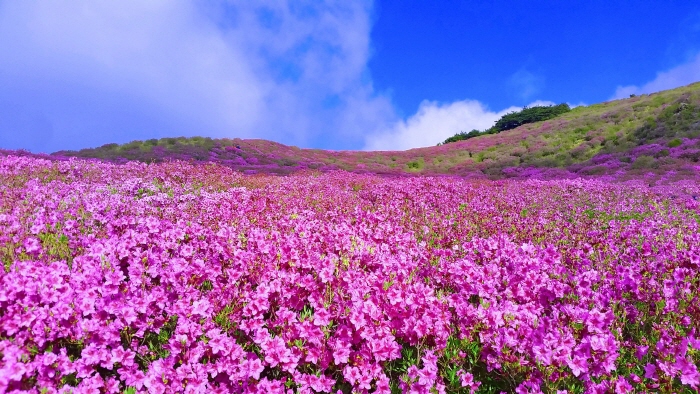
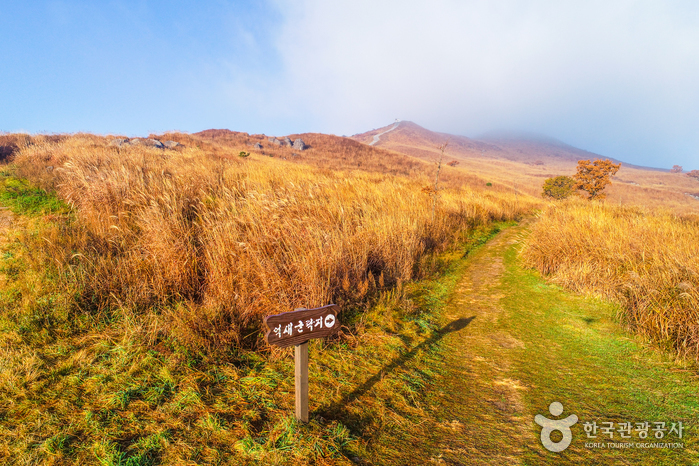
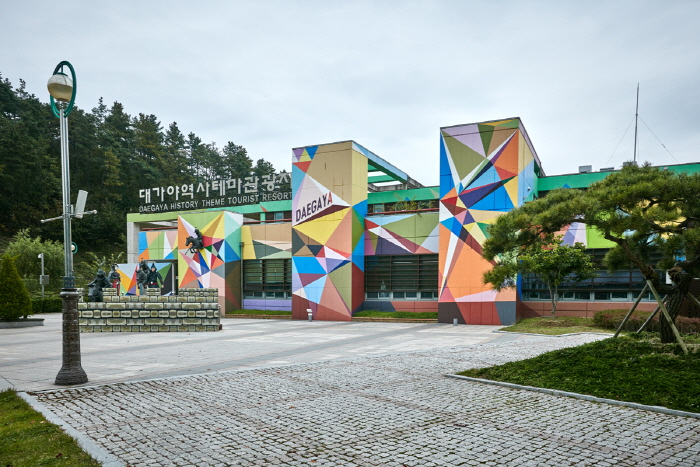
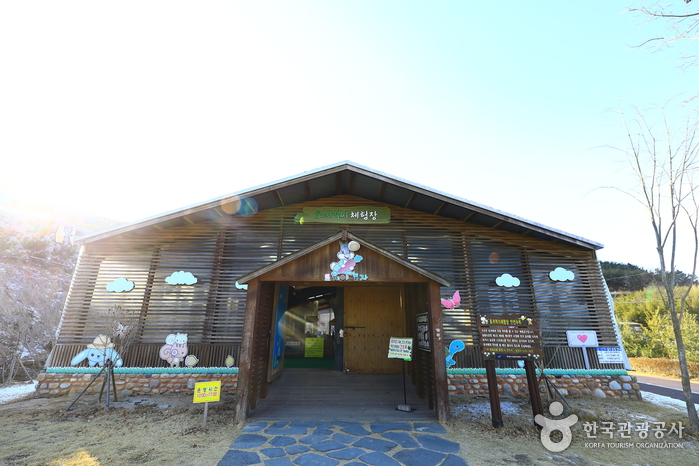
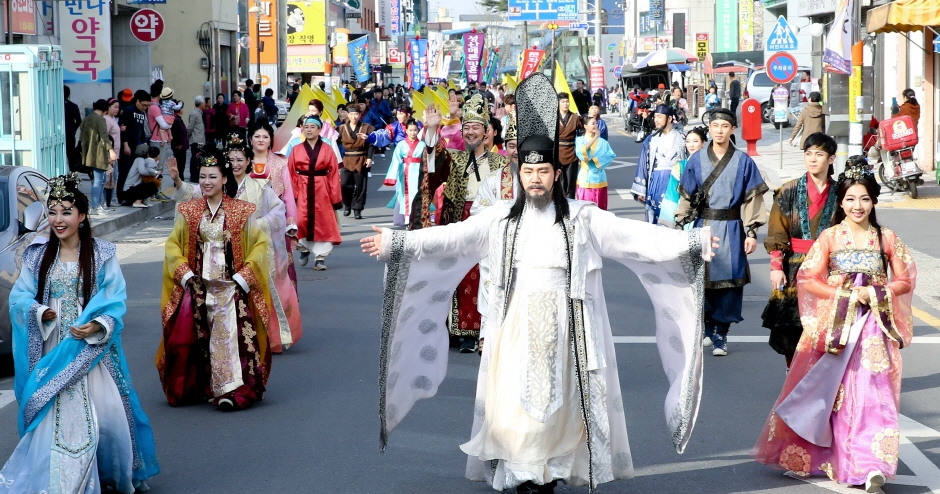
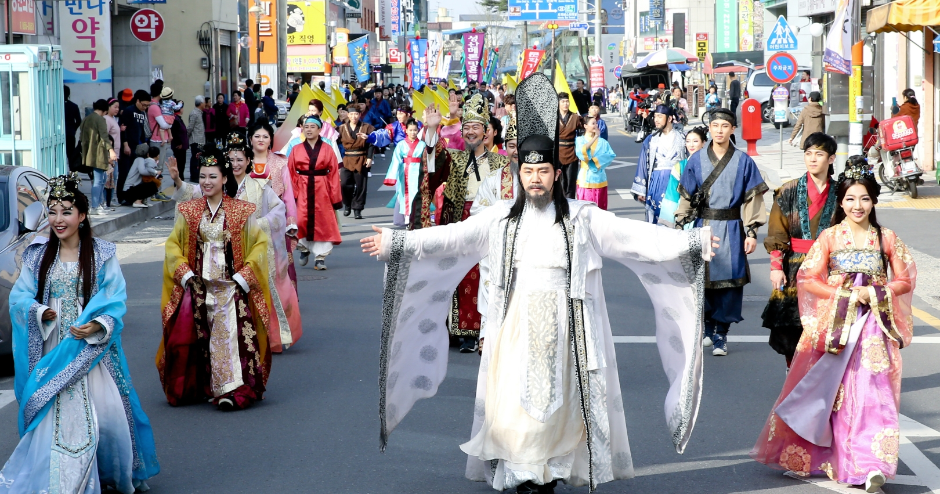
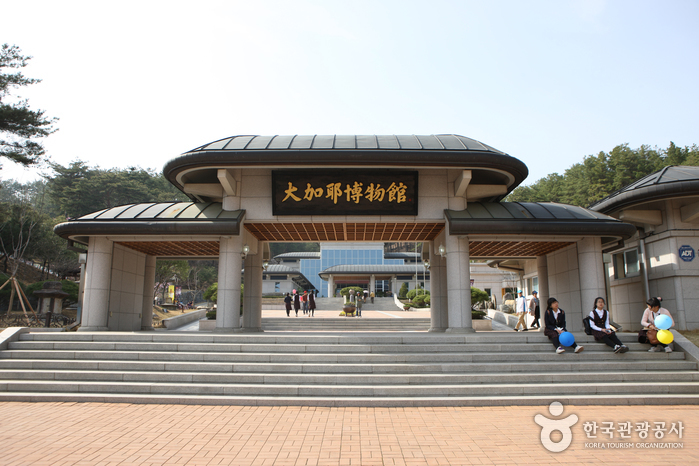
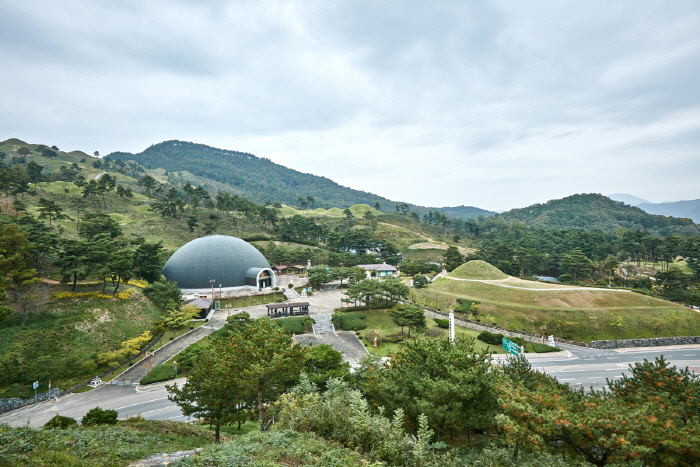

 English
English
 한국어
한국어 日本語
日本語 中文(简体)
中文(简体) Deutsch
Deutsch Français
Français Español
Español Русский
Русский